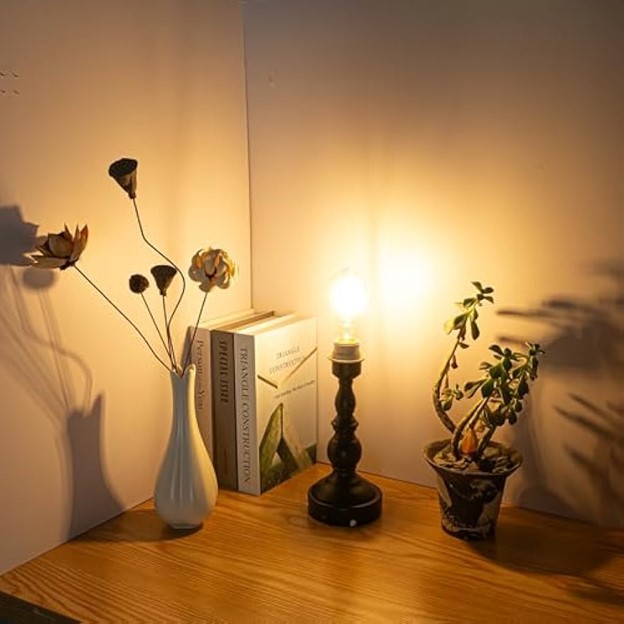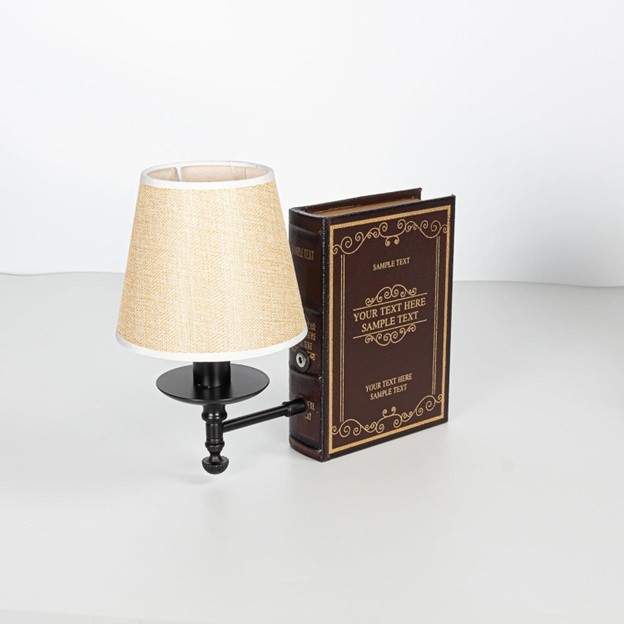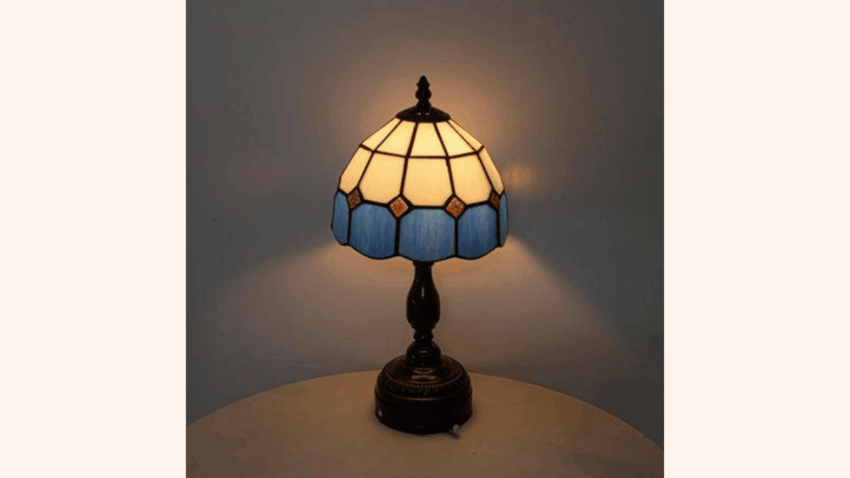Vintage table lamps possess an enduring charm that transcends fleeting design trends, offering both functional illumination and artistic expression. These carefully crafted pieces from bygone eras bring warmth, character, and sophistication to contemporary living spaces. Whether you’re drawn to the ornate details of Victorian-era fixtures, the sleek lines of mid-century modern designs, or the industrial appeal of early 20th-century pieces, vintage table lamps serve as conversation starters and focal points in any room.
The resurgence of vintage and antique furnishings in modern interior design reflects a growing appreciation for quality craftsmanship and sustainable decorating practices. Unlike mass-produced lighting, vintage table lamps tell stories through their unique patinas, hand-applied finishes, and distinctive design elements. They effortlessly bridge the gap between past and present, adding depth and personality to minimalist spaces while complementing traditional decor. This guide will help you understand the rich heritage of these timeless fixtures, master the art of incorporating them into your home, and maintain their beauty for years to come.
The History and Evolution of Vintage Table Lamps
The story of table lamps begins in the late 19th century when electricity transformed domestic lighting from gas and oil-based fixtures into safer, more convenient alternatives. Early electric table lamps from the 1880s and 1890s featured ornate Victorian designs with heavy brass bases, decorative glass shades, and elaborate detailing that reflected the era’s love of opulence. As the Art Nouveau movement gained momentum in the early 1900s, lamp designs incorporated flowing organic forms, nature-inspired motifs, and innovative techniques like Tiffany’s revolutionary stained glass shades that became iconic symbols of the period.

The 1920s and 1930s ushered in the Art Deco era, bringing geometric patterns, streamlined silhouettes, and luxurious materials like chrome and Bakelite to lamp design. Post-World War II, mid-century modern aesthetics dominated with clean lines, minimal ornamentation, and experimental materials including fiberglass and molded plastics. Designers like George Nelson and Isamu Noguchi created sculptural pieces that blurred the line between functional lighting and fine art. The 1960s and 1970s saw bold experimentation with ceramic bases in vibrant glazes, turned wood elements, and space-age forms. Each era left its distinctive mark, creating a rich tapestry of styles that collectors and decorators treasure today for their craftsmanship and historical significance.
Materials and Construction
Vintage table lamps showcase exceptional craftsmanship through their diverse material palette. Brass bases, often hand-polished or patinated, provided durability and weight for stability. Ceramic and porcelain bodies featured hand-painted designs or intricate glazing techniques that modern mass production rarely replicates. Glass components ranged from delicate hand-blown shades to heavy crystal elements, with techniques like milk glass, uranium glass, and hand-cut patterns adding distinctive character. Wood bases were turned on lathes or carved by skilled artisans, while metal components were forged, cast, or stamped with attention to detail. The electrical components, though primitive by today’s standards, were assembled with care using cloth-covered wiring and solid brass sockets designed to last generations, reflecting an era when products were built for longevity rather than obsolescence.
Styling Vintage Table Lamps in Modern Interiors
Integrating vintage table lamps into contemporary spaces creates a captivating dialogue between old and new, adding depth and personality that purely modern fixtures cannot achieve. The key to successful integration lies in treating these pieces as sculptural elements rather than mere lighting sources. In minimalist interiors, a single vintage lamp becomes an instant focal point, its intricate details and aged patina providing visual interest against clean lines and neutral palettes. For eclectic spaces, mixing multiple vintage styles creates curated layers that feel collected over time rather than purchased all at once.

Consider the lamp’s proportions relative to surrounding furniture—a substantial ceramic base works beautifully on a console table, while delicate brass fixtures suit bedside tables or writing desks. Balance is essential when combining vintage and modern elements. Pair ornate Victorian lamps with contemporary artwork to create contrast, or place mid-century modern fixtures alongside Scandinavian furniture for cohesive retro appeal. The lamp shade plays a crucial role in bridging style gaps; replacing a worn vintage shade with a simple linen drum shade can modernize the overall look while preserving the base’s character. Grouping vintage lamps in odd numbers on shelving units or mantels creates intentional vignettes, while strategic placement near mirrors amplifies both light output and visual impact, making these treasured pieces work harder in your design scheme.
Color Coordination
Color harmony determines whether a vintage lamp enhances or disrupts your interior scheme. Brass and bronze finishes naturally complement warm color palettes featuring terracotta, ochre, and cream tones, while chrome and nickel bases pair beautifully with cool grays, blues, and whites. Ceramic lamp bases with vibrant glazes—turquoise, mustard yellow, or avocado green—can either match existing accent colors for cohesion or introduce a deliberate pop of contrast in neutral rooms. When working with patterned vintage shades or hand-painted bases, pull one or two colors from the lamp to repeat in nearby textiles like throw pillows or artwork. Monochromatic schemes benefit from the textural variety vintage lamps provide, with patinated metals and aged finishes adding dimensional interest without color competition. For spaces with bold wall colors, consider vintage lamps in complementary metallic finishes that reflect light and prevent the room from feeling heavy, or choose ceramic bases in neutral tones that ground the space while letting the walls take center stage.
Placement and Positioning
Strategic placement maximizes both the functional and aesthetic value of vintage table lamps. In living rooms, position lamps on end tables flanking sofas at seated eye level to provide ambient reading light without glare, ensuring the bottom of the shade sits approximately 40 inches from the floor. Console tables behind seating areas benefit from taller vintage lamps that cast light upward, creating atmospheric glow while showcasing the lamp’s silhouette. Bedside tables require lamps with easily accessible switches and sufficient height to illuminate reading material—the shade’s bottom edge should align with your shoulder when seated in bed. In entryways, a striking vintage lamp on a credenza or narrow table creates welcoming illumination and sets the home’s aesthetic tone immediately upon entry. Dining room sideboards or buffets provide ideal platforms for symmetrical lamp pairs that add elegance during dinner parties. Avoid placing valuable vintage lamps in high-traffic areas where they risk being knocked over, and ensure cords are safely tucked away to prevent tripping hazards while maintaining the lamp’s visual appeal from all viewing angles.
Functional and Aesthetic Versatility
Vintage table lamps excel at performing dual roles in interior spaces, simultaneously addressing practical illumination needs while serving as distinctive decorative elements. Their versatility stems from the thoughtful engineering of earlier eras, when designers prioritized both form and function without compromise. Unlike many contemporary fixtures that sacrifice aesthetics for efficiency or vice versa, vintage lamps were crafted during periods when quality construction meant creating pieces that worked beautifully in every sense. A well-chosen vintage lamp provides task lighting for reading or working while its sculptural presence enhances the room’s visual narrative. The warm glow from incandescent bulbs in vintage fixtures creates inviting ambiance that LED alternatives struggle to replicate, though modern bulbs can be used when needed. Their adaptability extends across design styles—a brass banker’s lamp transitions effortlessly from traditional study to industrial loft, while a ceramic mid-century piece complements both retro and contemporary settings. This flexibility makes vintage table lamps practical investments that evolve with changing decor preferences, maintaining relevance through multiple design iterations while consistently delivering reliable illumination and timeless appeal.
Practical Lighting Solutions
Vintage table lamps address specific lighting challenges throughout the home with targeted functionality. In bedrooms, adjustable swing-arm lamps from the 1940s and 1950s provide directional reading light without disturbing sleeping partners, their weighted bases ensuring stability on nightstands. Living rooms benefit from three-way vintage lamps offering multiple brightness levels for activities ranging from conversation to detailed needlework. Home offices gain focused task lighting from classic banker’s lamps with their signature green glass shades that reduce eye strain during extended computer work. Dining rooms use buffet lamps in pairs to create soft ambient lighting that flatters guests while illuminating serving areas. Dark hallways transform with strategically placed vintage lamps on console tables, providing safe navigation while showcasing architectural details. Corner reading nooks come alive with tall vintage lamps that cast pools of light perfect for curling up with books, their substantial presence anchoring cozy spaces that might otherwise feel undefined or underutilized.
Decorative Accent
Beyond illumination, vintage table lamps function as sculptural focal points that anchor design schemes and express personal style. A dramatic Italian ceramic lamp with bold geometric patterns commands attention on an entry console, setting an artistic tone for the entire home. Symmetrical pairs of matching vintage lamps flanking a fireplace or framing a sofa create visual balance and formal elegance. Collections of smaller vintage lamps grouped on open shelving form curated displays that showcase evolving tastes and treasured finds. Their varied heights, textures, and finishes add dimensional interest to flat surfaces, breaking up monotonous sightlines and creating visual rhythm throughout spaces.
Maintaining and Restoring Vintage Table Lamps
Preserving vintage table lamps requires understanding their delicate materials and aging components while balancing authentic character with safe functionality. Regular maintenance prevents deterioration and extends the life of these irreplaceable pieces. Begin by assessing the lamp’s overall condition, noting areas of tarnish, loose fittings, frayed wiring, or damaged shades. Many vintage lamps need electrical rewiring to meet modern safety standards, particularly those with brittle cloth-covered cords or corroded sockets. Professional electricians familiar with antique lighting can replace internal wiring while preserving original exterior components and patina. For lamps with sentimental or significant monetary value, consult restoration specialists who understand period-appropriate techniques and materials. Simple maintenance tasks like tightening loose finials, replacing worn felt pads on bases, and cleaning accumulated dust can be handled at home with gentle care. Document your lamp’s original condition with photographs before attempting any restoration work. Sometimes imperfections like aged patina, minor surface wear, or original non-matching repairs add authentic character that aggressive restoration would erase, so consider which flaws enhance the piece’s story versus those compromising its integrity or safety.
Cleaning Tips
Clean vintage table lamps using material-specific approaches that protect delicate surfaces and finishes. For brass and bronze bases, dust regularly with soft microfiber cloths to prevent buildup that scratches patina during later cleaning. Remove tarnish from unlacquered brass using a paste of equal parts flour, salt, and white vinegar applied with soft cloths in circular motions, then rinse with water and dry thoroughly. Lacquered brass requires only gentle dusting and occasional wiping with barely damp cloths to avoid damaging the protective coating. Ceramic and porcelain bases clean beautifully with mild dish soap and water applied with soft sponges, avoiding abrasive scrubbers that scratch glazes. Glass shades benefit from vinegar-water solutions that cut through grime without leaving streaks, while delicate stained glass requires extra care to avoid loosening lead came. Fabric shades accumulate dust that vacuum attachments with soft brush heads remove effectively on low suction settings. For stubborn stains on fabric shades, test cleaning solutions on inconspicuous areas first, as vintage dyes may run or fade with moisture exposure.
Repairing Common Issues
Address frequent vintage lamp problems with straightforward repairs that restore functionality without compromising authenticity. Replace outdated bulbs with LED alternatives that mimic incandescent warmth while reducing heat damage to shades and wiring, ensuring wattage doesn’t exceed socket ratings stamped on original fixtures. Loose sockets often need simple tightening of the set screw that secures them to the lamp body, accessible by removing the shade and unscrewing the outer shell. Wobbly bases typically result from loose harp brackets or deteriorated felt pads, both easily remedied with screwdrivers and adhesive-backed replacement felt. Frayed cords pose fire hazards and require immediate replacement by cutting the cord near the base, threading new cloth-covered wire through the lamp body, and reconnecting to the socket following basic wiring diagrams available online or in repair manuals. When sourcing replacement parts for vintage lamps, specialty lighting retailers like KIVENLIGHTING often carry period-appropriate components including cloth-covered cords, brass sockets, and harps that maintain the authentic character of restored pieces.
Timeless Elegance for Modern Living
Vintage table lamps represent a meaningful intersection of artistry, history, and functionality that enriches modern living spaces in ways contemporary fixtures cannot replicate. These enduring pieces bring warmth and character through their unique craftsmanship, patinated finishes, and distinctive design elements that tell stories of past eras. By understanding their historical context, mastering thoughtful placement strategies, and appreciating their dual role as both practical lighting solutions and sculptural focal points, you can transform ordinary rooms into curated spaces with depth and personality.
The investment in vintage table lamps extends beyond aesthetics—it embraces sustainable decorating practices by giving quality pieces continued purpose while reducing demand for mass-produced alternatives. With proper maintenance and care, these timeless fixtures will illuminate your home for generations, adapting seamlessly to evolving design preferences while maintaining their inherent charm. Whether you’re drawn to ornate Victorian elegance, streamlined mid-century modernism, or industrial simplicity, vintage table lamps offer endless possibilities for personal expression and thoughtful design that celebrates craftsmanship, authenticity, and the enduring beauty of well-made objects.







